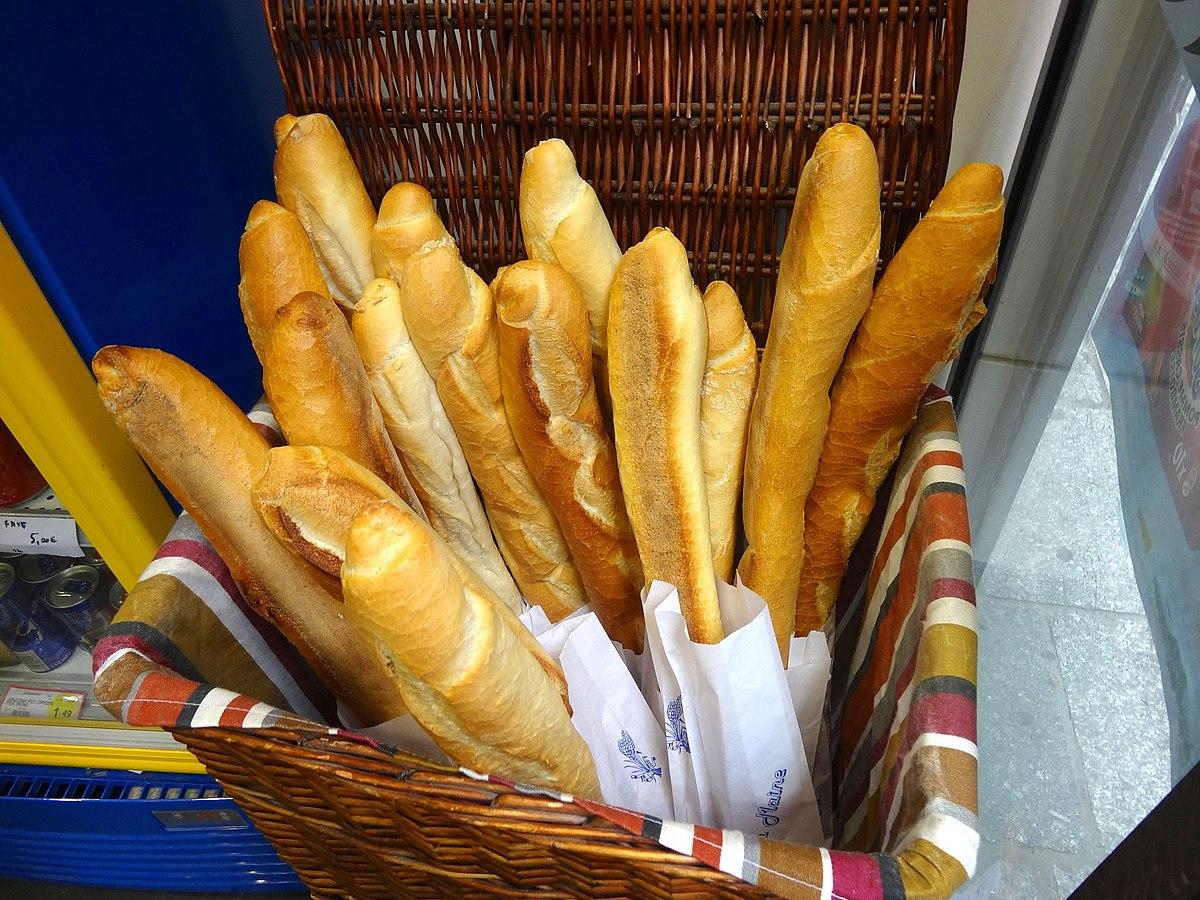It’s Sunday morning; friends will be coming over later today for a steaming bowl of beef stew, a green salad with pomegranate seeds, and, of course, a warm baguette with fresh French butter. There will undoubtedly be some good red wine because what’s good company, savory beef stew, and a baguette without some good red wine on the first really cold day of November?
The word “baguette” derives from the Latin baculum, meaning “staff” or “wand.” That makes good sense to me for two reasons: first, because a baguette looks like a wizard’s wand and second, we all know that even in these carbohydrate-phobic days, bread is still the staff of life. Even I, in my diet consciousness, find a fresh, warm baguette impossible to resist. The best I can hope for is moderation.
Baguettes have been around for a long time but their popularity soared in the early 18th Century when French bakers started using gurau, a highly refined Hungarian flour. Then along came the Viennese steam oven and the rest, as they say, is baking history. The French rightly claim much of the credit for inventing the baguette and they take its form and taste so seriously that the government still regulates a baguette’s weight (80 grams), maximum length (40 centimeters), and even its price—0.35 francs per loaf. If that’s not enough regulatory love, in May of this year, France submitted an application to UNESCO to give the humble baguette World Heritage status. Bon appétit!
Need any more proof of the power of the pedigree of the baguette? In April 1944, a competition called Le Grand Prix de la Baguette began in France to determine who made the best baguettes. Today, nearly 200 bakers compete each year in front of a 14-judge panel following strict guidelines. Their baguettes are judged based on baking, appearance, smell, taste, and crumb. The winner receives 4000 euros ($4,580) and supplies the French president with his daily bread for the duration of that year or until a new winner is chosen.
But wait: there’s more! There are as many stories about the origin and history of the baguette as there are neighborhood bakeries in Paris. Some say Napoleon deserves credit for the shape of the baguette because a long, thin loaf was easier for a soldier to carry. Another theory is that before the baguette came along, French workers had to carry knives to cut their bread. Since those workers had a tendency to get into fights, management came up with the idea of a long loaf that could be easily ripped apart by hand. Finally, bureaucracy reared its ugly head: in 1920, France passed a law saying that bakers could not begin working until 4am. Even that early hour didn’t give bakers enough time to bake round loaves for their customers’ breakfasts. Voilá la baguette!
There are only four ingredients in a baguette: flour, water, yeast, and salt. That’s it. Sometimes the best things in life may not be free, but they can still be simple.
Here’s the last thing I want to say about the baguettes we brought home to consume this evening. Remember I mentioned that this morning was the first really chilly one of the season? As my wife and I were walking home from the bakery, I could feel the radiant warmth of those two right-out-of-the-oven loaves under my arm. Kept my heart warm, just like she does.
I’ll be right back.
Jamie Kirkpatrick is a writer and photographer who lives in Chestertown, MD. His work has appeared in the Washington Post, the Baltimore Sun, the Philadelphia Inquirer, the Pittsburgh Post-Gazette, the Washington College Alumni Magazine, and American Cowboy Magazine. Two collections of his essays (“Musing Right Along” and “I’ll Be Right Back”) are available on Amazon. Jamie’s website is www.musingjamie.com.




jan bohn says
Made me SO HUNGRY reading this article. When we lived in London, England, even the grocery stores baked their own bread (various kinds) and baguettes. Everywhere there was fresh, really fresh, bread – so wonderfully delicious. I haven’t found much of anything to compare with that here in Easton. Perhaps the flour and water makes a difference? Baguettes are tolerable but often hard and definitely not just made. At least bread isn’t such a temptation!
Jamie Kirkpatrick says
Try a fresh baguette from Evergrain Bakery in Chestertown. Worth the drive!